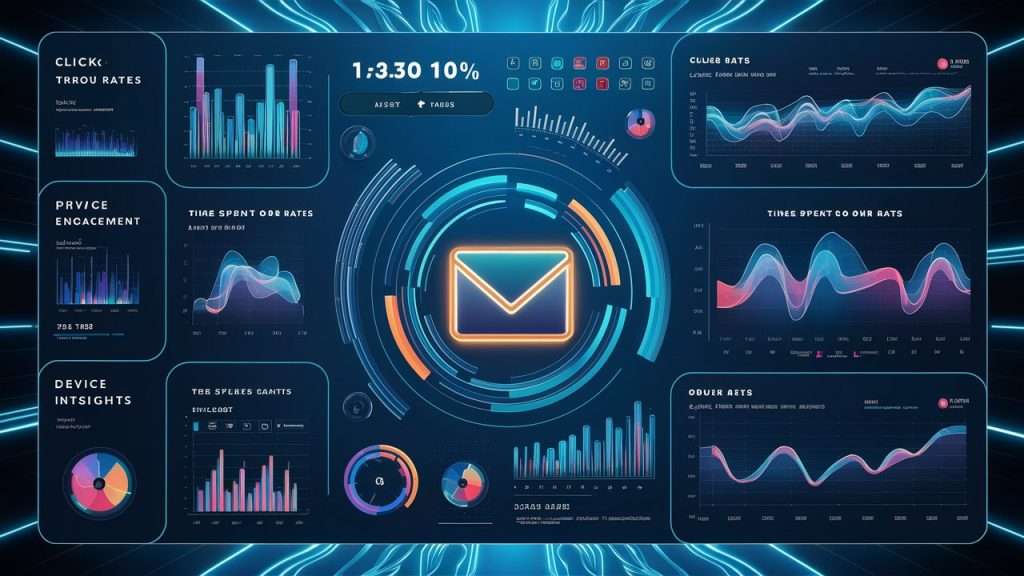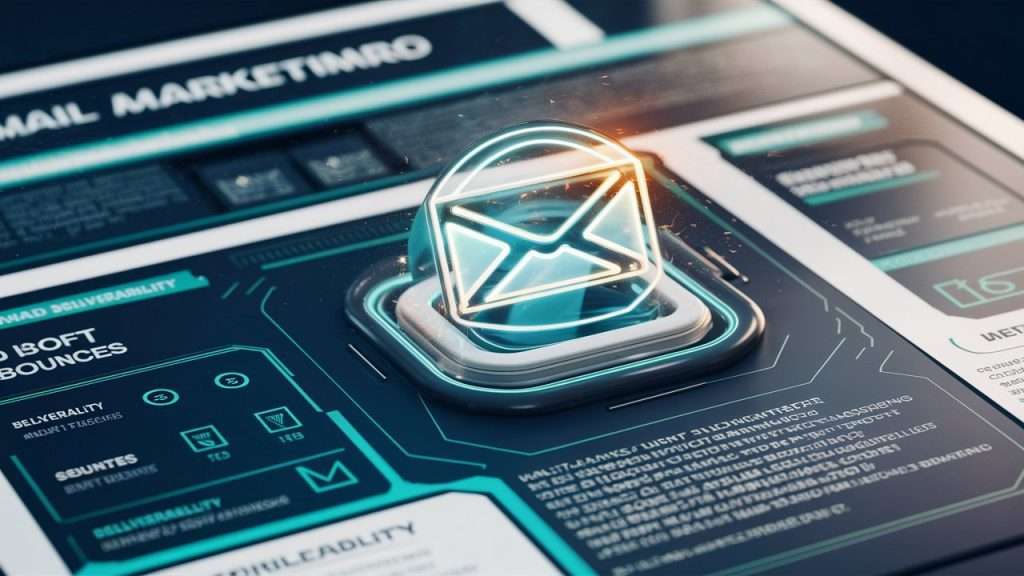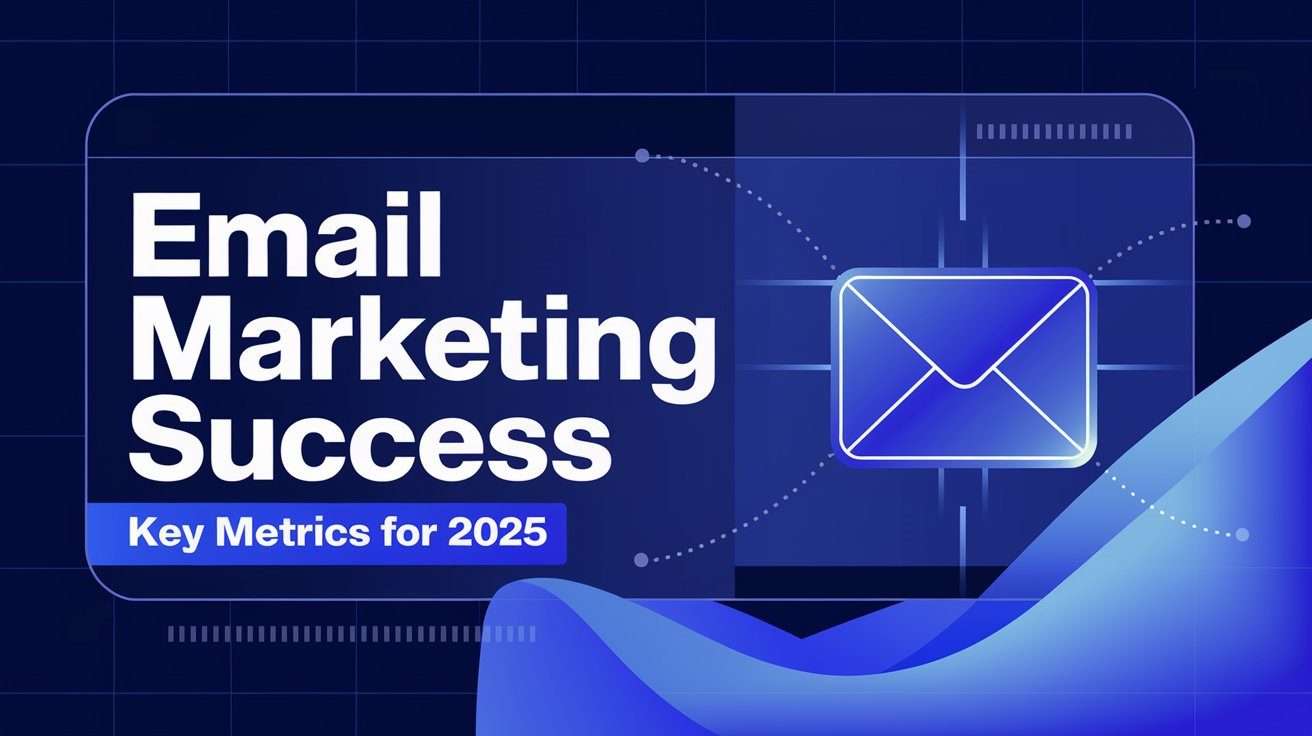Email marketing is still one of the best ways to address and interact with the customers, but the metrics we use are changing. The future trend forecasting up to the year 2025 is that the basic set of parameters of email marketing remain mostly the same, but will have significant changes due to new technologies, new data protection legislation, and emerging new trends in the behavior of consumers.
In order to maximize the effectiveness of campaigns the specifics of which metrics will matter in the future needs to be understood in relation to the effectiveness of the email campaigns. In this article, you will learn the four most important KPIs essential for email marketing and Measuring Email Marketing Success in 2025.
Open Rates: Beyond the Basics

In the Email Marketing and Measuring Email Marketing Success, It will shift the way that we approach open rates, a much beloved mark of the email marketing campaigners. Open rates used to be a very effective indicator; however, with the current privacy features such as apple’s Mail Privacy Protection it is very hard to track opens accurately.
Engagement-Based Metrics
By 2025, ‘engagement’ numbers like click through rates and time spent with emails as opposed to simple ‘open’ rates will be more meaningful. This fits well with the earlier arguments in this paper where it was pointed out that mere monitoring of an email opened is not very helpful but an analysis of how the users are engaging with the content could be very useful. It will also continue to be the case that brands will be interested in the amount of time that a user spends with an email as well as their subsequent activities.
Device and Platform Insights
Audience behavior while interacting with emails on various devices and media will also be interesting to understand. Specific numeric data that informs which devices; mobile, tablet or desktop are probably most frequently accessed by your audience can assist in optimizing your content. By 2025, the key to achieving successful email marketing is going to be the optimization of the e-mails for all types of devices and thus device/platform data will be important markers to consider.
Email Read Time
It is much better than counting opens because instead of that marketers will concentrate on how long users spend reading their emails. Indeed because there is more traffic on mobile devices, ‘time to read emails’ is a better indication of the quality/ relevance of your content. Longer read time is a clear sign that people are actually interested in what you have to say, which means that the content is popular. It is at this level of interaction that people are built into loyal customers and more conversions are made.
Click-Through Rates and Click-to-Open Rates

In Email Marketing and Measuring Email Marketing Success, CTR/CTOR will remain defining email marketing indicators in 2025, as will open rate (OR), which offers value more often asked than provided. All these metrics are crucial in telling you how great your content and call-to-action (CTA) is at making users take action.
Click-Through Rate (CTR)
CTR stands for click-through rate, this is ratio between number of unique clicks a link within your email and the number of emails delivered. If the CTR is high, then it means that your content, design and CTA are good enough to lead users to the next step. Finally by 2025, there’s belief that more content that will be customized to address the specific needs of the clients will be generated which in turn will help to boost the click through rate.
Click-to-Open Rate (CTOR)
CTOR measures number of click throughs to number of unique opens. This metric is crucial because it removes involvement of overall open rate meaning how effective content is once the user has opened the email. By 2025, doing more for CTOR will include using split-testing on subject lines, emails and call-to-action sections to find out what causes more response.
Content Relevance and Personalization
It can be inferred that CTR and more specifically CTOR is, by and large, embraced by personalization. It means that by 2025 people will not only anticipate receiving customized messages from brands across industries but expect it. There need to be an immense focus on data points like behaviour, generic preference, or prior interaction to craft content that will be highly personalized for every user. Email marketing that is conveniently segmented and sent based on a user’s journey or their interests or geographic location would have better click through rates overall.
Conversion Rate and ROI

From the Email Marketing and Measuring Email Marketing Success, The primary purpose of most emails is to convert the recipient into a customer or a client, or to get him or her to take a specific action. Evaluating the conversion rate together with ROI will continue to serve as the most valuable tools for appreciating the pecuniary effectiveness of email marketing strategies.
Conversion Rate
Click through rate on the other hand looks at the number of people that got through to the website and the conversion rate analyses the number of such people that made the desired action. It is used to determine to what extent your email campaign is successful in achieving its main objective. Email will also be used because by 2025 brands will have better tracking and integration tools that will show the customer journey from the moment they subscribe to the emails until they make a purchase. It will also provide greater transparency for marketers to determine which kind of content, offer or CTA is most effective at facilitating particular behaviour.
Revenue Per Email Sent
Another useful instrument of evaluating the effectiveness of email marketing in 2025 will be a revenue per email sent (RPE) rate. RPE also gives marketers an idea on how much income is directly attributable to each email sent hence helping to tell the most valuable campaigns. It enables brands to evaluate the RETURN on their email marketing investment directly, and easily see how each campaign influences the financial results.
Multi-Touch Attribution
As consumers interact with brands across multiple touch points, multi – touch attribution will be essential to email marketing in 2025. Multi-touch attribution assists marketers in determining exactly how emails tie into the final conversion as well as into the total picture. This kind of tracking makes sure that the value of email is not underestimated and offers a better perspective of marketing worth helping make a decision on fine-tuning resources for maximum productivity.
Bounce Rate and Deliverability

In Email Marketing and Measuring Email Marketing Success, Guaranteeing that an email ends up in a reader’s inbox is just as important as gauging that success. Bounce rates and deliverability metrics will remain crucial indicators to decide the percentage of your emails that are getting to the recipients’ inbox.
Hard vs. Soft Bounce Rates
The culture of segmenting bounces into the two categories of hard and soft will still be relevant in 2025. In simple terms, unreachable bounces or hard bounces are a situation where the message could not be delivered to the recipient’s inbox for any reason, including the recipient’s email having been declared invalid. On the other hand, soft bounce messages are a temporary nature such as a full inbox. These statistics help marketers to keep the subscribers’ list purified and guarantee high deliverability degrees. Consequently, appropriate bounces management helps marketers improve the campaign and the sender reputation.
Spam Complaint Rate
Spam complaint rate gives you the result of how many people labeled your email as spam. A high number of spam complaints harm your sender reputation and, thus, email delivery. By 2025, getting complaint rates for spam as low as possible will be important because the ISPs will be even more effective at filtering messages. The use of relations sent to clients will have to be kept simple, their value clearly stated, expectations realistic and consent proper in order to avoid ending up in spam.
Deliverability Rate
Deliverability rate refers to the position of your messages within the customers’ inbox in the sense that most of your emails reach the designated clients’ inboxes as opposed to being relegated to spam or outrightly being rejected. By 2025, deliverability will become so much more than the ability to deliver messages; it will indicate the health of your lists and the quality of your content. In order to increase and sustain a high deliverability rate, marketers will have target list hygiene,umlu the use of verified domains and regularly offer value to the consumer.
Subscriber Growth and Retention

In the Email Marketing and Measuring Email Marketing Success, Since email marketing depends on the audience who subscribe, having and nurturing subscribers is imperative for an email marketing program. Using subscriber metrics, marketers will be able to let see how effective they are in acquiring the new subscribers and maintaining the existing ones.
List Growth Rate
List growth rate measures the rate of increase in the number of subscribers to a particular list, whether newly permitted subscribers or subscribers who opted out from a list. A good list growth rate means your marketing messages are well received and that your marketing strategies continue to draw potential customers. The subscriptions will be of much value to the marketers, especially in the year 2025 because marketers will not subscribe to the highest number possible, but they will aim at subscribing a few real interested audience.
Unsubscribe Rate
Holding power is another useful measure that will help you understand how your subscribers are interacting with you. High rates of unsubscribers may not be a good sign because it shows that the content posted is uninteresting or the frequency of newsletter is too high or the users are not well segmented. This way, brands would maintain as well as revert to the audience having low likelihood of actually ‘unsubscribing’.
Subscriber Engagement Score
Subscriber engagement score is a more advanced metric in comparison and will become more integral in 2025. It defines the level of total interaction of the particular subscriber considering the variable reactions to your emails. This score makes it easier for the marketers to know which of these subscribers are very active and which one is likely to disengage, he or she might decide to launch a re-engagement campaign or change the content being posted on the subscribers wall.
Summary
By 2025, the meanings of email marketing success will involve better understanding of senders’ engagement, targeted individualization, and conversion rates. However, new key ratios, inclining open rates, will be replaced by the indicators more reflecting email read time, clik-through rate, conversion to open rate, and conversion rate. GPS-like technologies will allow precise tracking of users and allow marketers to truly push the right message to the right target demographic with great success. By closely monitoring deliverability, list growth, and subscriber engagement, brands will be well-positioned to create impactful, revenue-generating email campaigns that adapt to the evolving digital landscape.

